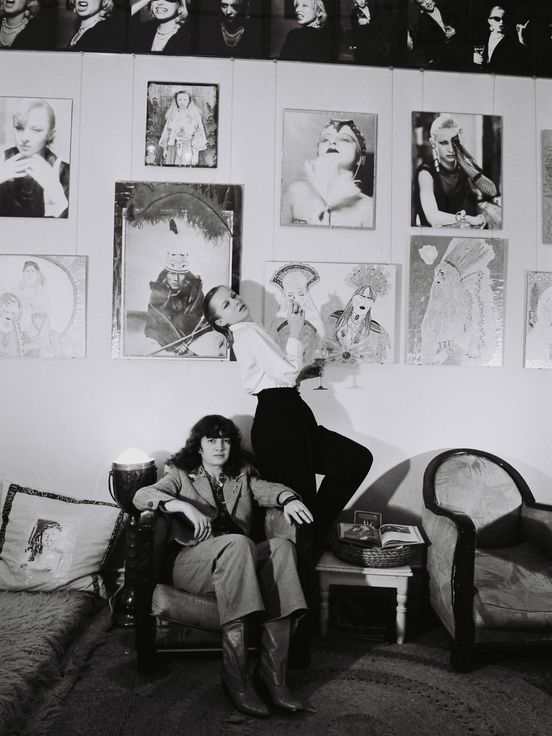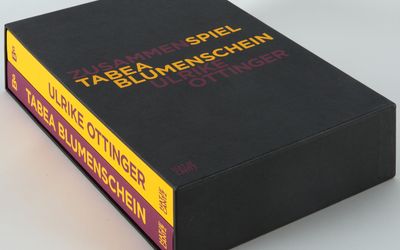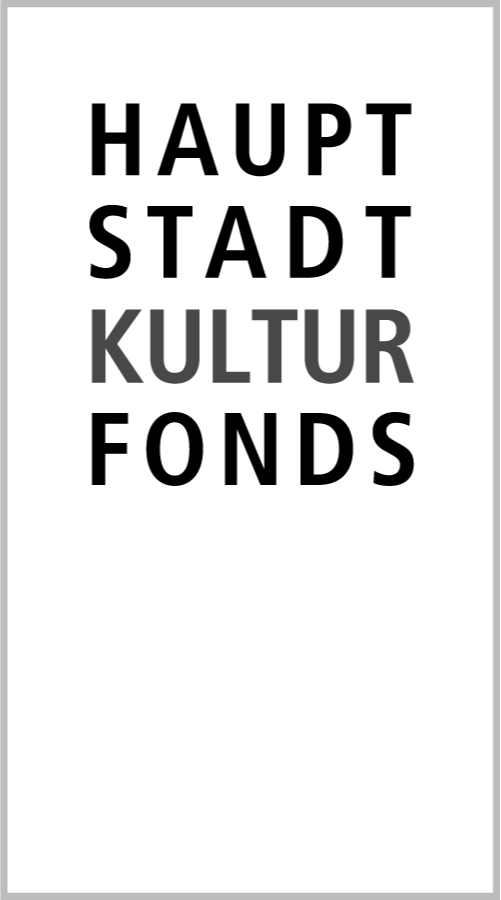Feminist self-empowerment
In the course of her collaboration with Ottinger, Blumenschein became a professional clothing designer and a sensitive character actor. As costume designer for the films they made together in the 1970s she mastered the artistic process from original sketch to production and performance.
When her collaboration with Ottinger came to a temporary end after the film “Ticket of No Return” in 1979, Blumenschein found a new framework for her activities in the punk music and avantgarde scene of West Berlin. In 1980 the short-lived German edition of Andy Warhol’s magazine “Interview” published an unusual fashion page with four drawings by Blumenschein under the heading: “Fashion is world history without politics”. That sentence is a philosophy: fashion is a form of artistic expression that can absorb any culture in the world and apply, interpret or re-signify it for its own creative purposes. What is ugly can be beautiful, what is alien can be familiar and what is good can be evil. That became the guiding principle for Blumenschein’s feminist self-empowerment.
Along with Blixa Bargeld, Frieder Butzmann, Dagmar Dimitroff, Wolfgang Müller, Nikolaus Utermöhlen and others, she was one of the “Geniale Dilletanten” whose manifesto was published in 1982, together with her drawings, under the legendary Merve imprint.
When Müller and Utermöhlen founded their band “Die Tödliche Doris” in 1980, Blumenschein joined them as a costume designer and performer. In 1984 she appeared in their show in New York. She made films of her own in the super-8 format.In May 1985 the German TV channel ZDF screened her 60-minute film “Zagarbata”, made two years earlier, which began with footage of a live concert by the “Böhse Onkelz”, regarded back then as Nazi skinheads, and went on to feature Claudia Skoda, Marc Brandenburg and Wolfgang Müller. Blumenschein’s obsession with what it meant to be German was especially apparent in the early 1990s. From now on, in various manifestations, it was part and parcel of her visual idiom, always accompanied by antithetical motifs: women, sailors, bearded ladies, and indigenous peoples from a wide range of cultures, such as Mexico, Hawaii, the Pacific or Africa.



